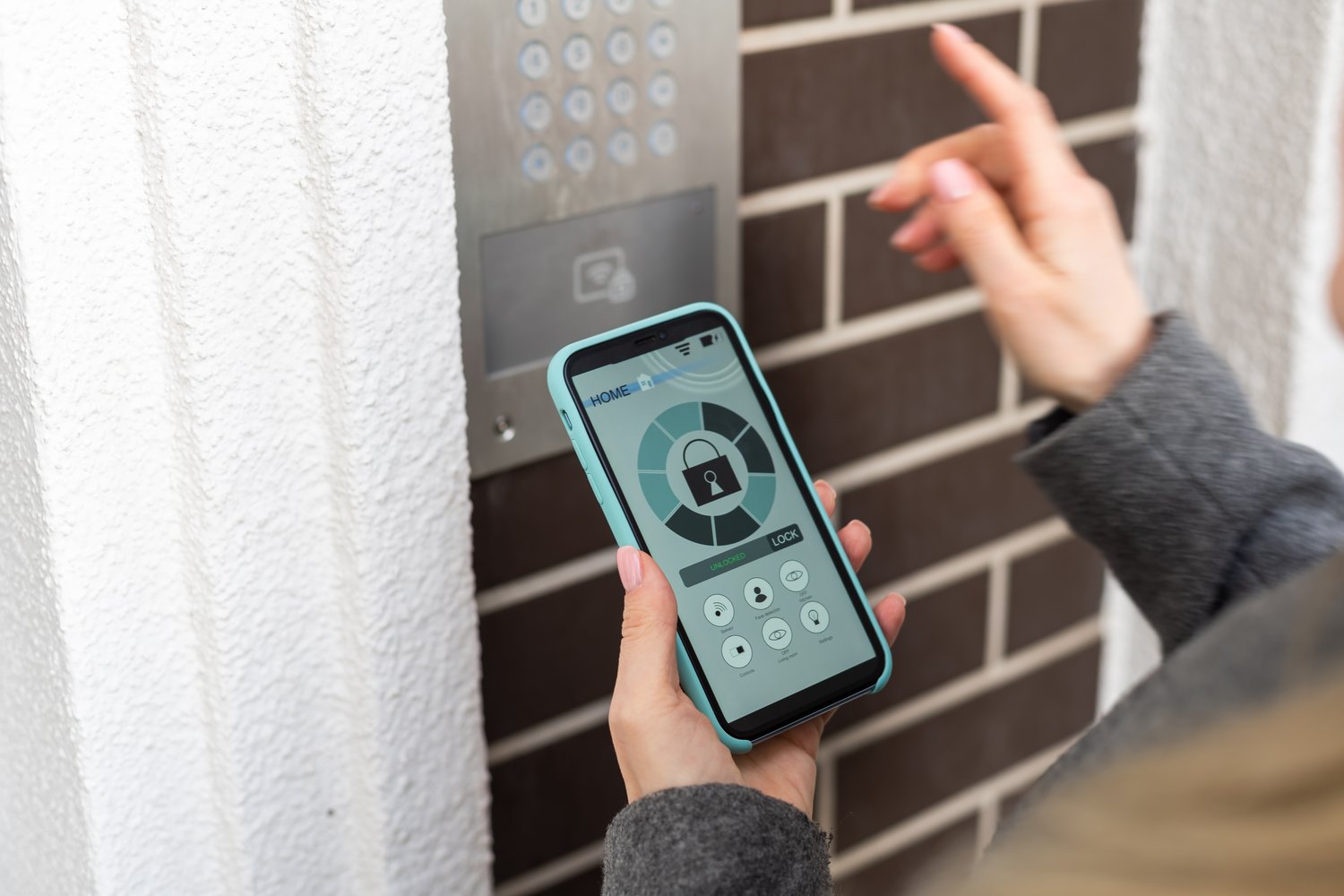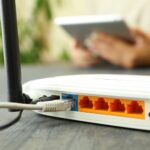Smart doorbells promise a blend of convenience and heightened security, but what happens when they’re hampered by connection hiccups? Tackling connectivity issues can transform your smart doorbell from a costly gadget into a dependable security ally. Understanding these challenges is vital to make the most of your home security setup.
- Discover common culprits behind connectivity woes, such as Wi-Fi interference and software glitches.
- Navigate the intricacies of Wi-Fi configurations and signal strength to boost your doorbell’s connection.
- Uncover how insufficient power supply might be affecting your smart doorbell and how to fix it.
- Keep your smart doorbell’s software updated to fend off connectivity issues and bolster security.
By diving into these essential insights, you’ll equip yourself to troubleshoot effectively, ensuring your smart doorbell works seamlessly. You’ll help secure your home and enjoy peace of mind, all while contributing to a community of savvy homeowners eager to share their tips and experiences.
Identifying Common Causes of Smart Doorbell Connectivity Problems
Smart doorbells have become an integral component of modern home security systems, offering numerous benefits. Yet, connectivity issues can diminish their functionality, leaving users frustrated.
One prevalent cause is Wi-Fi interference. This occurs when multiple devices compete for the same network frequency, leading to signal disruptions.
In addition, power supply problems can contribute significantly. Insufficient power means the doorbell may not function consistently, leading to connection drops and unreliable performance.
Software glitches also play a crucial role in connectivity challenges. Outdated firmware or buggy updates can disrupt the communication between your smart doorbell and your home network.
To ensure seamless operation of your smart doorbell, it is essential to diagnose and address these issues effectively. Understanding these common causes lays the foundation for troubleshooting, allowing users to optimize their smart home experience.
Wi-Fi Connectivity Challenges and Solutions
The performance of your smart doorbell is heavily dependent on the strength and reliability of your Wi-Fi signal. Poor signal strength can lead to delayed notifications, video lag, or complete disconnections.
Network configuration is another critical aspect. Ensure your router is set up correctly, with the appropriate channel selected to minimize traffic congestion.
Interference from other devices often goes unnoticed. Devices such as microwaves, cordless phones, and other electronics operating on similar frequencies can interfere with your doorbell’s connectivity.
To address these issues, consider relocating your router to reduce obstacles and improve signal strength. Advanced settings, like using a dual-band router, can also help by allowing your doorbell to operate on a less congested frequency band.
Proper troubleshooting and optimization of your Wi-Fi settings are key steps in maintaining a reliable connection for your smart doorbell, ensuring efficient home security operation.
Resolving Power Supply Issues in Smart Doorbells
Smart doorbells rely heavily on a stable power supply for optimal performance. Inadequate power supply can lead to issues such as delayed notifications, poor video quality, or even a complete shutdown. Understanding these common power disruptions is crucial to ensuring the reliable functionality of your device.
First, verify whether your smart doorbell is receiving sufficient power. Many doorbells operate either through a hardwired electrical system or via batteries. If hardwired, check that the connections are secure and that there are no breaks in the wiring. For battery-operated models, ensure the batteries are fully charged and in good condition.
Sometimes, changes in your home’s electrical system can cause unexpected power supply issues. Inspect your circuit breaker to ascertain that it hasn’t been tripped, which can cut off power to your doorbell. Another step in troubleshooting involves examining the transformer connected to your doorbell. An incompatible or faulty transformer can lead to inadequate power, which directly impacts the device’s functionality.
To resolve these power supply problems, consider upgrading your power source. Investing in a high-capacity transformer, or switching to rechargeable batteries, can provide more consistent power delivery and help mitigate connectivity issues. Ensuring an uninterrupted power supply can significantly enhance your smart doorbell’s performance and extend its lifespan.
Diagnosing Smart Doorbell Connection Issues with Software Updates
Keeping your smart doorbell’s software up-to-date is essential to maintain its functionality and enhance security. Manufacturers frequently release software updates to fix bugs, improve performance, and address security vulnerabilities. Ignoring these updates can lead to connectivity problems or other technical difficulties with your smart doorbell.
To diagnose these connectivity issues, first check the current software version on your smart doorbell. Most manufacturers offer detailed instructions on their websites or apps on how to update the software. It often includes enabling an automatic update setting, allowing your device to download and install updates seamlessly when they become available.
An outdated software version can hinder your smart doorbell’s ability to communicate effectively with other smart devices or your Wi-Fi network. Regularly updating your device ensures it runs efficiently, incorporates the latest features, and is protected against potential security threats.
For a seamless updating process, ensure that your doorbell is connected to a stable Wi-Fi network with sufficient bandwidth. Avoid updating during peak usage times when your internet connection may experience slowdowns. By prioritizing software updates, you maintain a stable connection and enhance the overall functionality of your smart doorbell system.
Maintaining a Stable Connection for Continuous Operation
Ensuring your smart doorbell maintains a stable connection is crucial for reliable operation and enhanced home security. A strong, consistent connection optimizes both performance and safety, allowing you to make the most of your device’s features.
One of the primary steps in maintaining a stable connection is regularly assessing your Wi-Fi signal strength. Ensure your router is positioned centrally within your home to maximize coverage and reduce blind spots. Consider investing in a Wi-Fi extender if certain areas experience weaker signals.
Another factor is minimizing interference from other devices. Many households have numerous gadgets connected to the same network, which can cause congestion. To combat this, you can separate devices across different frequency bands, such as the 2.4 GHz and 5 GHz bands, to balance the load.
Firmware updates play a pivotal role as well. Manufacturers frequently release updates to enhance performance, fix bugs, and improve security. Regularly check for software updates on your smart doorbell and apply them promptly to prevent connectivity issues.
Securing your network can also contribute to a stable connection. Use a strong, unique password for your Wi-Fi and regularly change it to prevent unauthorized access. A secure connection not only improves performance but also safeguards against potential security breaches.
By consistently monitoring these factors and adapting as necessary, you can significantly enhance the operation and longevity of your smart doorbell. These proactive measures ensure that it remains a reliable component of your home security system. Share your own strategies or insights below to help others maintain their smart devices effectively.
Frequently Asked Questions about Smart Doorbell Connectivity
Why is my smart doorbell not connecting to Wi-Fi?
Your smart doorbell might be too far from the router, experiencing interference, or have incorrect network settings.
How can I improve the Wi-Fi signal strength for my doorbell?
Consider repositioning your router, removing obstacles, or using a Wi-Fi extender.
What should I do if my smart doorbell loses power?
Check the power source, ensure the connections are secure, and verify the power adapter is functioning.
How do I update the software on my smart doorbell?
Use the manufacturer’s app to check for updates and ensure your doorbell is connected to Wi-Fi during the process.
Can interference from other devices affect my smart doorbell?
Yes, devices using the same frequency can cause interference. Try changing your Wi-Fi channel to reduce it.





